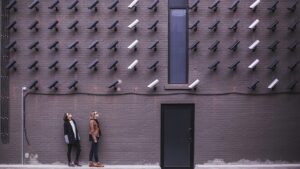WHY TECHNICAL SURVEILLANCE COUNTERMEASURES MATTER

source: nvestigations.com | Image: pexels.com
When most people think of security, they picture physically protected people and properties. However, in the modern world, this frequently isn’t enough. Digital and electronic security are equally important. That is why technical surveillance countermeasures, also known as bug sweeps, are a must-do form of security for most businesses.
What Are TSCM?
TSCM is a category of countersurveillance. They are tools and techniques that help security professionals defend against covert surveillance using “bugs” and other electronic equipment. These are some example of the types of surveillance devices that you may need to be concerned about:
- Microphones
- Cameras
- Voice recorders
- Intercom system bugs
- Phone bugs
- Consumer electronics (many bugs are repurposed toys and gadgets)
- Baby monitors/nanny cams
Bug sweeps help to detect these devices so they can be removed or neutralized. Electronic surveillance devices often emit electromagnetic radiation, often in the form of radio waves.
Examples of electronic countermeasures include multimeters, radio frequency field detectors, near field detectors, and feedback detectors. These can be used to sweep for any bugs emitting radiation.
Countermeasures can include both devices for sweeping and procedures for detecting and protecting against electronic surveillance. For example, a physical examination of telephone and internet systems. While sweeping using a tool is relatively fast, it is not always sufficiently comprehensive. Combining physical searches with technical sweeping is essential in high-security situations.
Why Countermeasures Are Important
To put it simply, the reason countermeasures are important is because electronic surveillance is a real threat. Although the idea is a tiny microphone hidden in a conference room may sound like the stuff of spy movies, it is a surprisingly frequent problem.
Bugs are often small and difficult to detect. Someone may be able to bribe or coerce a member of your team or cleaning crew to place a device in a highly sensitive area of your offices.
In some cases, criminals may use completely remote methods of surveillance such as parabolic microphones and long-range camera lenses. Applying countermeasures that can also defeat these forms of surveillance is essential.
Electronic surveillance is most frequently a concern for businesses because they have valuable information that may be stolen by competitors or criminals. However, bugs are also often used by jilted or suspicious spouses. They may also be applied by criminals against individuals. In other words, protecting against electronic surveillance is something you may need to consider realistically.
How You Can Apply Countermeasures at Your Organization
Typically, individuals and families handle possible surveillance reactively. They sweep for bugs when they think one is present. Businesses may not have this luxury. If you have sensitive information you need to protect such as trade secrets, you need to be proactive in using countermeasures.
- Focus Your Efforts: Protecting your entire office and team against surveillance is close to impossible. Focus your efforts on high-priority areas such as C-suite offices and dedicated conference rooms.
- Harden Areas Against Surveillance: Help protect your designated areas against surveillance by proactively protecting it. Minimize the effectiveness of exterior microphones and cameras with window treatments and coverings. Use in-place monitoring systems to identify any unexpected electromagnetic radiation.
- Sweep: Perform regular sweeps to detect any bugs that may be in your high-security areas. Most importantly, do this before any sensitive discussions. For example, if you expect to be discussing a deal with a potential partner, ensure that the room is fully swept for surveillance shortly beforehand.
- Use a Combined Approach: Don’t rely solely on TSCM to protect you against surveillance. The best solution is multifaceted. As effective as sweeping can be, it is not perfect and should not be relied upon without other protective measures in place.
Using these steps to apply countermeasures in your workplace will help to protect your organization against surveillance. Similar techniques may be applied in the homes and vehicles of executives or in hotel rooms being used for meetings. With the right security technology consultant, you can more fully protect your organization.
The Importance of Multifaceted Security
As mentioned above, you should not rely solely on bug sweeps to protect your offices from electronic surveillance. Bugs are getting smaller, more subtle and easier to place than ever before. Practicing good physical security measures will help to keep your high-security areas free from bugs. Good access control to key offices and meeting rooms is an essential element of this.
Furthermore, a corporate spy may use your own technology against you using a cyber-attack. Malware could turn your laptop into a bug. Good cybersecurity is an essential part of the anti-surveillance mix.
Businesses have a significant interest in protecting themselves against surveillance. However, it is no simple matter. Working with the right security consultant will help you to cover all your bases in defending your organization. With a combination of technical surveillance countermeasures, physical security, cybersecurity, and good policy, you will be ready to meet the threats of the modern world.
